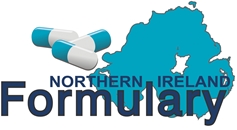Includes generalised anxiety disorder (GAD), panic disorder, social anxiety disorder, obsessive-compulsive disorder (OCD) and post-traumatic stress disorder (PTSD)
Non-pharmacological treatment is the first line intervention in all anxiety disorders
SSRIs are the first line pharmacological drug choice in the management of patients with chronic anxiety disorders. See Section 4.3.2
Prescribing Notes
- Refer to NICE CG123 Common mental health disorders
- Refer to NICE CG113 Clinical Guideline for Generalised Anxiety Disorder (GAD) and Panic Disorder
- Also refer to NICE CG 159 Social Anxiety Disorders
- Non-pharmacological treatment is the first line intervention in all anxiety disorders
- Treatment options for panic disorder and generalised anxiety disorder include psychological, pharmacological and self-help approaches. Trauma focused psychological therapy is the first line treatment for post-traumatic stress disorder. Choice of treatment in individual cases will usually be determined by patient preference, service availability and the severity of the condition
- Diagnosis and treatment can be difficult. In some cases specialist advice or referral will be necessary
- Benzodiazepines are indicated for the short term (up to four weeks) relief of severe anxiety; long-term use should be avoided
- Treatment with a benzodiazepine in states of anxiety should be limited to the lowest possible dose for the shortest possible time:
- Do not offer a benzodiazepine for the treatment of GAD in primary or secondary care except as a short-term measure during crises
- GAD should be distinguished from acute anxiety state
- Benzodiazepines are associated with a risk of dependence, sedation, accidents and withdrawal symptoms. Antidepressants are preferred
- Benzodiazepines should not be used to treat panic disorder
Post-Traumatic Stress Disorder
- Benzodiazepines are probably ineffective
- Benzodiazepines are only useful in reducing associated anxiety; only careful short-term use is supported by NICE
